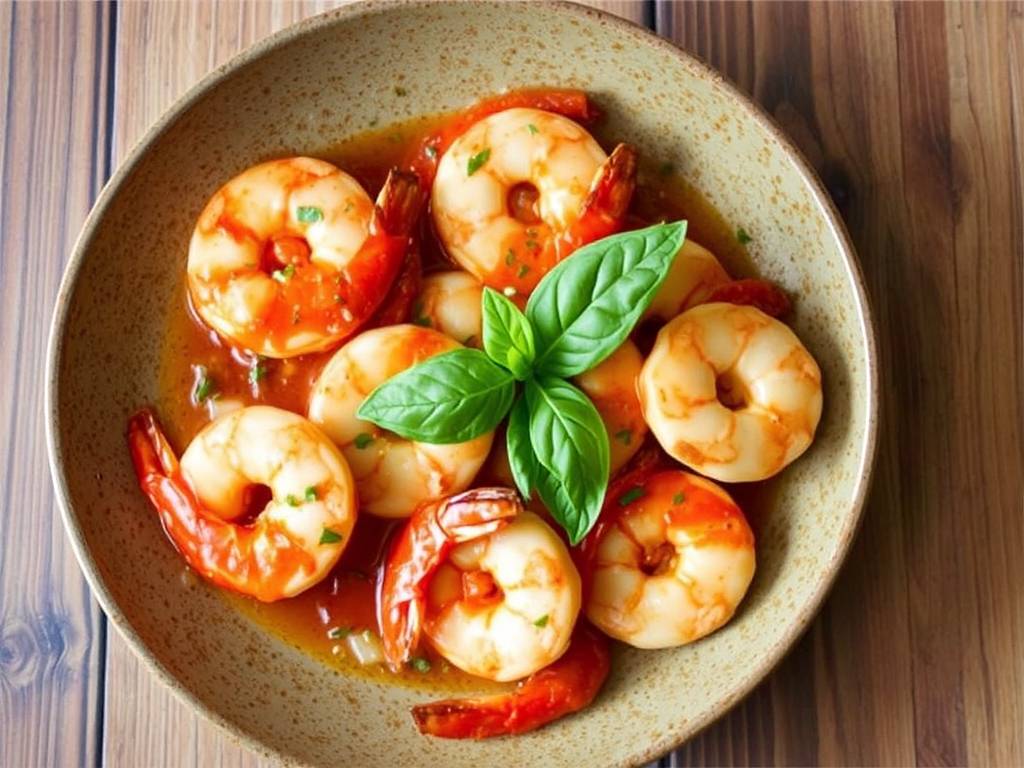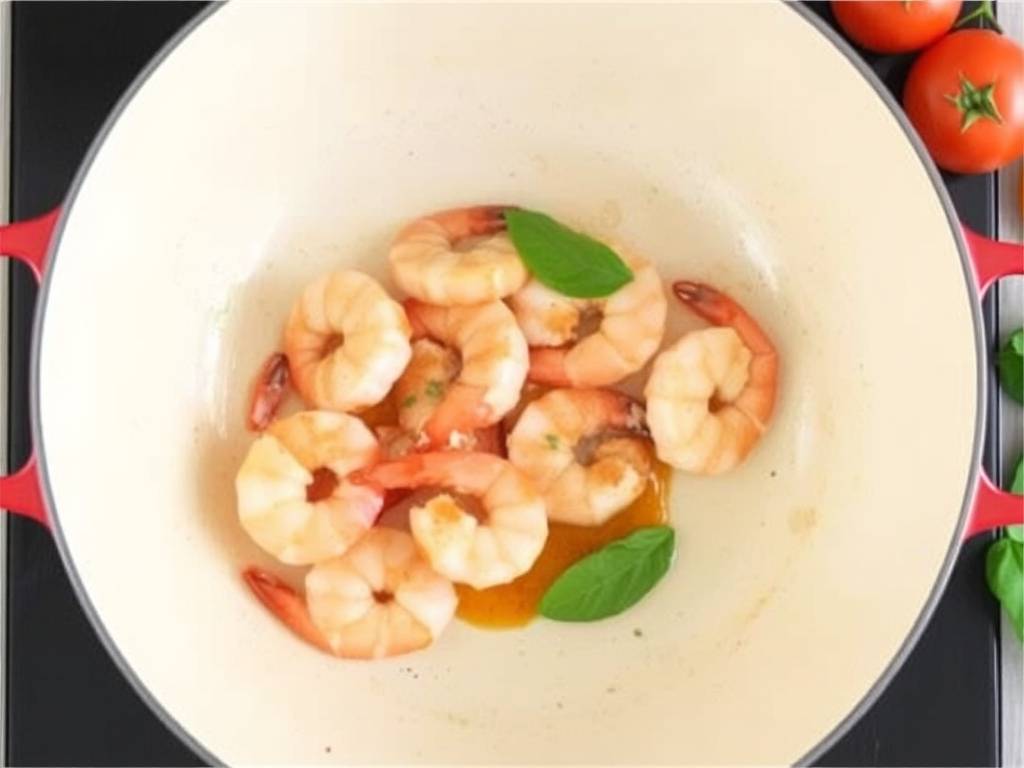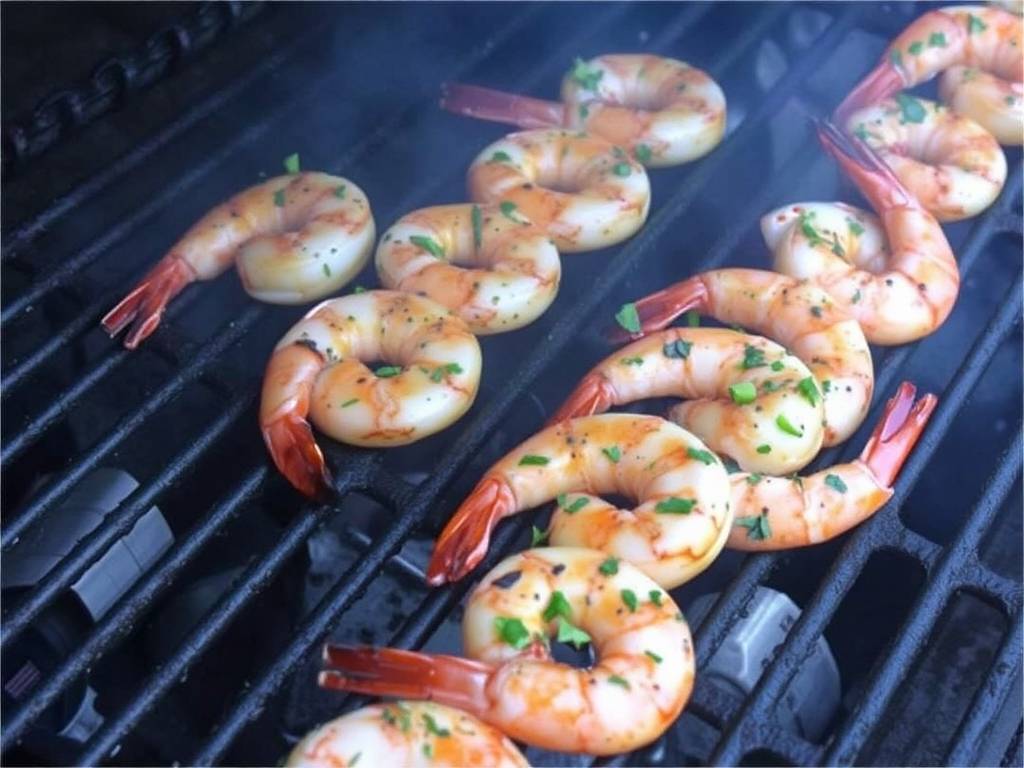There is a certain magic that happens when the sweetness of fresh shrimp meets the bright acidity of tomato and the aromatic, peppery notes of basil, all bound together by the rich, velvety embrace of butter. This dish, Shrimp with Tomato and Basil Butter, is more than a mere recipe; it is a celebration of simplicity and elegance. It speaks to the heart of rustic, Mediterranean-inspired cooking, where a few high-quality ingredients are allowed to shine in perfect harmony. It is deceptively simple to prepare, yet the result is a restaurant-quality meal that is sure to impress, whether it’s a quiet weeknight dinner for two or the centerpiece of a festive gathering.
The journey to mastering this dish begins not at the stove, but at the market. The success of any simple recipe hinges entirely on the quality of its components. For the shrimp, seek out the freshest you can find. Ideally, they should be wild-caught, firm to the touch, and have a clean, briny scent of the sea. If frozen is your only option, thaw them slowly and completely in the refrigerator overnight. Avoid quick-thawing in water, as this can compromise their delicate texture. The size is a matter of preference; large (16-20 count per pound) or jumbo (11-15 count) shrimp work beautifully, offering a substantial, satisfying bite.
The tomatoes should be ripe and full of flavor. While you can use canned, high-quality San Marzano tomatoes in a pinch, the dish truly sings with fresh, in-season Roma or cherry tomatoes. Romas, with their dense, meaty flesh and low moisture content, are ideal for creating a rich, concentrated sauce. Cherry tomatoes, when halved and sautéed, burst with a delightful sweetness that provides a different, yet equally wonderful, texture and flavor profile.

Then, there is the basil. This is not an ingredient to be taken lightly. The basil must be fresh—dried basil has no place here. Look for vibrant green leaves with no signs of wilting or black spots. The fragrance should be potent and unmistakable. Finally, the butter. This is a cornerstone of the dish’s luxurious finish. Use a high-quality European-style unsalted butter, which has a higher fat content and a richer, more complex flavor than standard butter. The "unsalted" aspect is crucial, as it allows you to control the seasoning of the dish precisely.
Preparation: The Art of Mise en Place
Before a single flame is lit, embrace the French culinary principle of mise en place—"everything in its place." This act of preparation is what transforms cooking from a frantic chore into a graceful, enjoyable process.
Begin by preparing your shrimp. Peel and devein them, but consider leaving the tails on. Not only does this make for a more elegant presentation, but the tails also contribute flavor during the cooking process. Pat the shrimp thoroughly dry with paper towels. This step is non-negotiable; moisture is the enemy of a good sear. Season the shrimp lightly with salt and pepper and set them aside.
Next, turn your attention to the vegetables. If using Roma tomatoes, core them and cut them into a small dice. For cherry tomatoes, simply slice them in half. Finely mince a few cloves of garlic—the amount can be adjusted to your taste, but two or three cloves are a good starting point. Finally, take your fresh basil. You will need a generous handful. Stack the leaves, roll them tightly into a cigar shape, and use a sharp knife to slice them into thin ribbons (a technique known as chiffonade). Reserve a few whole small leaves for a final garnish.
The Culinary Dance: A Step-by-Step Guide
-
The Searing of the Shrimp: Place a large skillet, preferably stainless steel or cast-iron, over medium-high heat. Allow it to get properly hot. Add a tablespoon of a neutral, high-heat oil like grapeseed or avocado oil. Once the oil shimmers, carefully add the shrimp in a single layer, ensuring they are not crowded. Crowding the pan will steam the shrimp rather than sear them. Cook for just 60-90 seconds per side, until they turn pink and opaque with a beautiful golden-brown sear. They will not be fully cooked through at this point, and that is intentional. Using tongs, promptly remove the shrimp from the skillet and set them aside on a clean plate. Their residual heat will carry them to perfection.

-
Building the Flavor Base: Reduce the heat to medium. In the same skillet, you will now have a treasure trove of flavor: the fond—those delicious browned bits left by the shrimp. Add one to two tablespoons of butter to the pan. As it melts, use a wooden spoon or spatula to scrape the fond from the bottom of the skillet. This process, called deglazing, is the secret to building a deeply flavorful sauce. Immediately add the minced garlic to the sizzling butter and cook for just 30 seconds, until fragrant. Be vigilant; garlic burns in an instant and turns bitter.
-
The Tomatoes Take the Stage: Add your prepared tomatoes to the skillet along with a pinch of salt and a crack of black pepper. The salt will help draw out the tomatoes' juices. Sauté the tomatoes, stirring occasionally, until they begin to break down and soften. For diced Romas, this may take 5-7 minutes, until they form a chunky sauce. For cherry tomatoes, cook for 3-4 minutes, until they soften and their skins start to wrinkle. You can encourage them to burst by pressing down gently with the back of your spoon.
-
The Unification: Now, return the partially cooked shrimp and any accumulated juices back to the skillet. Toss them gently in the tomato mixture to coat and reheat, which should take no more than a minute. The goal is to warm the shrimp through without overcooking them. Overcooked shrimp become tough and rubbery—the cardinal sin of shrimp cookery.
-
The Grand Finale: The Basil Butter: Turn off the heat. This is the most critical step for achieving a restaurant-quality finish. Add the remaining cold butter (about 3-4 tablespoons, cut into small cubes) and your sliced basil to the pan. Swirl and stir continuously as the residual heat melts the butter. This technique, known as monter au beurre (mounting with butter), creates a glossy, emulsified sauce that clings beautifully to the shrimp and tomatoes. The cold butter incorporates slowly, preventing the sauce from breaking and giving it a luxurious body and sheen. The heat of the pan will wilt the basil just enough to release its essential oils without turning it black, preserving its vibrant color and fresh flavor.
Serving and Pairing Suggestions
Serve your masterpiece immediately. This dish is wonderfully versatile. For a elegant appetizer, serve it in a shallow bowl with crusty, grilled bread to soak up every last drop of the incredible sauce. As a main course, it is sublime served over a bed of al dente linguine, angel hair pasta, or creamy polenta. A side of simple steamed asparagus or a light arugula salad provides a refreshing contrast.
When it comes to wine, a crisp, acidic white wine is the perfect companion. A Sauvignon Blanc from New Zealand or the Loire Valley, with its notes of citrus and grass, will cut through the richness of the butter beautifully. A dry Italian Pinot Grigio or a Vermentino would also be excellent choices, complementing the Mediterranean flavors.
Variations on a Theme
The beauty of this recipe lies in its adaptability. Feel free to use it as a canvas for your own creativity. A pinch of red pepper flakes added with the garlic will introduce a gentle, warming heat. A splash of dry white wine or a squeeze of fresh lemon juice added after the tomatoes have softened will add a layer of brightness. For a touch of umami depth, a teaspoon of tomato paste can be cooked with the garlic for a minute before adding the fresh tomatoes.
In conclusion, Shrimp with Tomato and Basil Butter is a testament to the power of simple, thoughtful cooking. It requires no complex techniques or esoteric ingredients, yet it delivers a result that is profoundly satisfying and deeply flavorful. It is a dish that encourages you to slow down, to savor the process, and to delight in the act of creating something beautiful and delicious to share. So, gather your ingredients, trust your instincts, and prepare to conduct your own culinary symphony.






发表评论